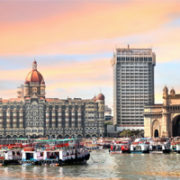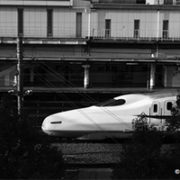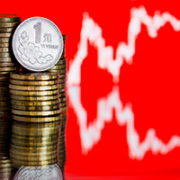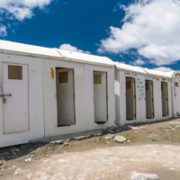Urban development
 Health
Health
 Economics, Poverty
Economics, Poverty
 Economics, Environment, Industry and trade
Economics, Environment, Industry and trade
 Economics, Finance sector development, Transport
Economics, Finance sector development, Transport
 Governance and public sector management
Governance and public sector management
 Economics, Finance sector development, Health
Economics, Finance sector development, Health
 Finance sector development
Finance sector development
 Agriculture and natural resources, Governance and public sector management
Agriculture and natural resources, Governance and public sector management
 Sanitation, Water
Sanitation, Water

International partnerships for catalyzing the growth of India’s Smart Cities

The Smart Cities Mission, launched by the Government of India, aims to transform the urban governance ecosystem, especially urban local bodies (ULBs). It is hoped that the mission will help attract innovation, expertise, and financial resources for the holistic development of the ever-expanding urban areas. The creation of sector-focused, region-specific “special purpose vehicles” (SPVs) is an attempt to unleash the potential of a consortium-based approach in delivering the interdisciplinary ideation and implementation of projects.
Universal health coverage in the Fourth Industrial Revolution

In October 2018, the world will commemorate the 40th anniversary of the seminal Declaration of Alma-Ata where the aspiration of “health care for all” was boldly declared. The realities have sadly fallen far short of the rhetoric—half the world lacks access to essential health services and 100 million people fall into financial catastrophe due to medical bills.
Structural transformation, growth, and inequality: Evidence from Viet Nam

Economic development and growth entail large-scale structural transformation of economies. Many Asian and African economies are now undergoing such structural transformation—typically from agriculture to manufacturing and service sectors. This transformation inevitably involves reallocation of workers from the primary sector to the manufacturing and service sectors. One of the important questions arising is whether such growth led by structural transformation helps the poor. On the one hand, growth may lift people out of poverty and therefore improve living standards for everyone. On the other hand, growth may increase income inequality by benefiting the rich more than the poor.
How does trade openness affect the environmental Kuznets curve?

The People’s Republic of China (PRC) has reformed and opened up its economy for 4 decades. However, accompanying the country’s fast-growing gross domestic product (GDP) and trade sector, environmental degradation, such as deteriorating water quality, land deforestation, pollution, and frequent haze plagues, has attracted a great deal of attention.
Spillover and straw effects of high-speed rail

On a typical ride on the Tokaido Shinkansen traveling from Shin-Osaka to Tokyo, it does not take a childlike imagination to notice the view from the bullet train of scattered cars, small houses, and baseball fields, gradually changing as the train approaches its destination to packed apartment buildings and tall office towers. This is an important phenomenon of high-speed rail (HSR) implementation, which can be described by the terms “spillover effect” and “straw effect.”
Malaysia’s affirmative action should be based on need

When Malaysians came out in numbers to replace the government that had ruled since Independence, they signaled a clear desire for change. But what kind of mandate does the new government have? Pakatan Harapan’s election campaign included a host of promises, most of which are now being pursued without much controversy.
The costs of being overweight and obese in Asia and the Pacific

Increased prosperity in Asia and the Pacific has led to lifestyle changes with unwanted impacts. Studies have shown that as a result of economic progress, regions are shifting to a diet that is linked with noncommunicable diseases (NCDs), particularly overweight and obesity. The World Health Organization estimates for 2015 show that about 15 million people aged 30–69 years die annually because of NCDs (Waqanivalu 2018).
Financial development and stability in the People’s Republic of China: Evaluating the policy challenges

The People’s Republic of China (PRC) has come a long way in developing its financial system, and it has done so at a speed that has been breathtaking. The country’s “big four” banks are now the four largest banks in the world by assets, while another 14 PRC banks make it into the top 100 largest banks. The PRC last year surpassed the euro area to become the world’s largest banking system by assets, and PRC banks are now major sources of dollar-denominated lending, not least as part of the country’s One Belt One Road initiative.
Land trust laws as a solution to the land acquisition dilemma for infrastructure development in Asia

Many developing countries struggle with the dichotomy of acquiring land for infrastructure development and balancing landholder interests. Industrialization of rural villages across developing Asia (particularly in India) has created widespread social and political tensions in the recent past. Most of these are attributed to land acquisition (Sarkar 2007). The “right” of sovereignty on land has long been a contested subject. Even in democracies, the exigencies of collective benefit versus individual land rights have been at loggerheads. In the long run, growth dividends from infrastructure development and industrialization are likely to materialize (Paul and Sarma 2017), and acquisition of land to facilitate this process remains one of the main development challenges in many Asian countries.
The sanitation economy: Digging for treasure

In both respects, sanitation is deeply embedded. Grids of sewer pipes have been fixed into the surface of cities in the developed world for more than a century, and it has become a strong and important part of most policy makers’ belief that this is how to provide sanitation. Or, despairing of such systems ever being built in developing countries, some have swung to the opposite view, advocating off-grid solutions, which, while less embedded in the ground, become an equally strong and important part of their proponents’ beliefs.


Search
Subscribe / Connect to Asia Pathways
Subjects
- Agriculture and natural resources
- Blog
- Capacity development
- Climate change
- Economics
- Education
- Energy
- Environment
- Finance sector development
- Gender
- Governance and public sector management
- Health
- Industry and trade
- Information and Communications Technology
- Infrastructure
- Miscellaneous
- Population
- Poverty
- Private sector development
- Regional cooperation and integration
- Sanitation
- Social development and protection
- Transport
- Uncategorized
- Urban development
- Video Blog
- Water
Recent Posts
- Artificial intelligence: A new driver for inclusive growth and development?
- Increasing trust in cross-border e-commerce and artificial intelligence
- Enhancing access to maternal and newborn healthcare in developing Asia
- Can electric vehicles lead the way to a sustainable future?
- Mitigating climate-related sovereign risk to accelerate action on the climate emergency




Recent Comments